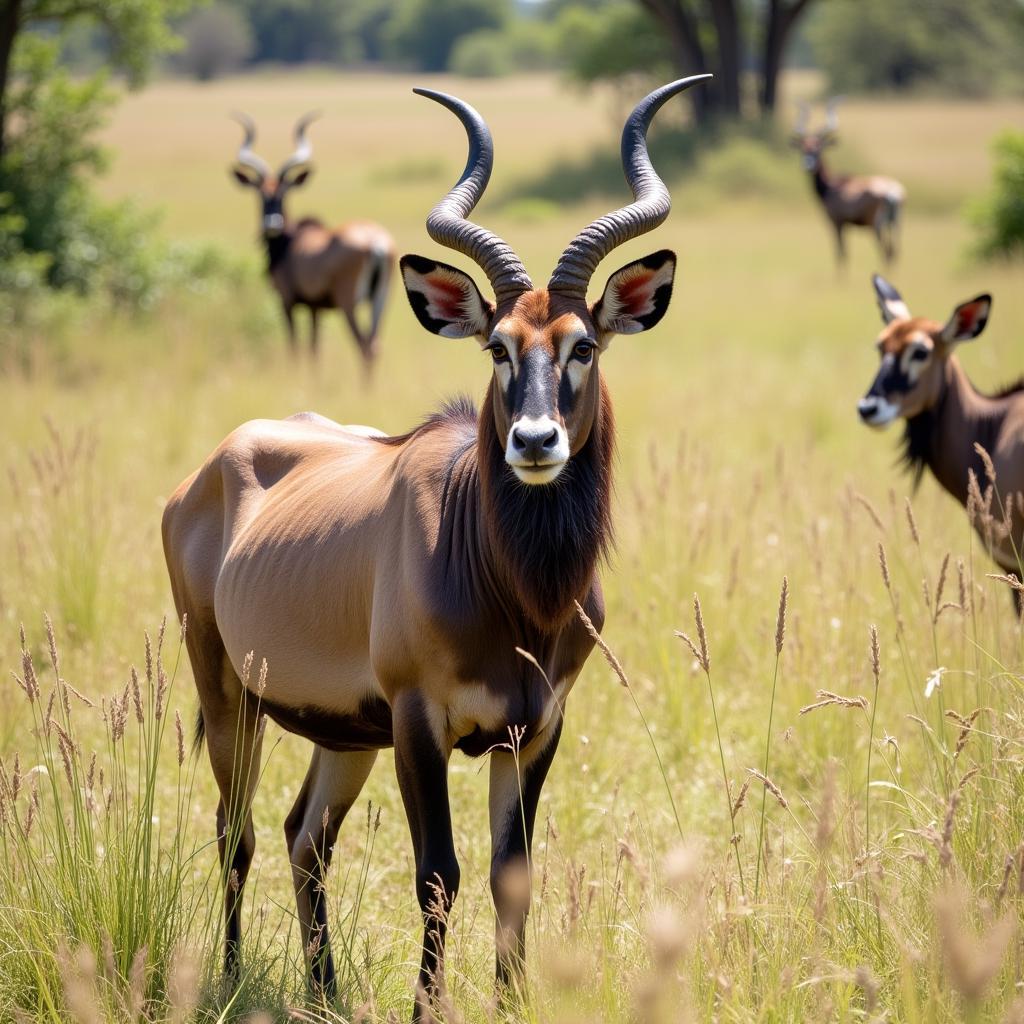Unveiling the African Blue Crane: Your Ultimate Itinerary
Planning a trip centered around the majestic African Blue Crane? This comprehensive guide provides an itinerary for an unforgettable experience, covering everything from the best locations for sightings to understanding their unique habitat and cultural significance.
Where to Find the African Blue Crane: Prime Locations in Southern Africa
The African Blue Crane, scientifically known as Anthropoides paradiseus, is an iconic bird endemic to Southern Africa. While they can be spotted throughout the region, certain locations offer higher chances of witnessing these graceful creatures in their natural environment. South Africa, particularly the Overberg region and the Karoo, boasts significant populations. Namibia’s Etosha National Park and Botswana’s Okavango Delta also provide opportunities for crane viewing. Knowing where to look maximizes your chances of an encounter.
South Africa: A Hotspot for Crane Enthusiasts
South Africa holds the largest population of African Blue Cranes. The Overberg region, with its rolling hills and vast plains, is a prime viewing area. Here, cranes are often seen foraging in farmlands and alongside roads. The Karoo, a semi-desert region, offers a different landscape but equally rewarding sightings.
Namibia and Botswana: Exploring Diverse Habitats
While not as widespread as in South Africa, both Namibia and Botswana harbor populations of African Blue Cranes. Etosha National Park in Namibia, known for its diverse wildlife, provides an opportunity to observe cranes alongside other iconic African animals. The Okavango Delta in Botswana, a unique wetland ecosystem, offers a chance to witness cranes in a more secluded and pristine setting.
Creating Your African Blue Crane Itinerary: A Step-by-Step Guide
Building a successful itinerary involves considering several factors. Firstly, identify your preferred viewing location. Research the best time of year for optimal sightings, as crane behavior can vary seasonally. Consider incorporating other wildlife experiences into your itinerary, as many crane habitats are rich in biodiversity. Finally, factor in travel time between locations and allocate sufficient time for observation.
- Choose Your Destination: Select your primary viewing location based on your interests and other travel plans.
- Research Optimal Viewing Times: Crane activity and visibility can fluctuate throughout the year due to breeding seasons and weather patterns.
- Incorporate Related Wildlife Experiences: Enhance your itinerary by including visits to other wildlife reserves or national parks in the region.
- Plan Travel Logistics: Consider travel times, accommodation, and transportation options to create a seamless and enjoyable experience.
Timing is Everything: Best Season for Crane Viewing
The best time to see African Blue Cranes varies depending on location. In South Africa, the breeding season, which typically falls between August and December, is a great time to observe courtship displays and family interactions. In other regions, crane sightings might be more consistent throughout the year, though local conditions and rainfall can influence their visibility.
Understanding the African Blue Crane: Ecology and Conservation
The African Blue Crane is more than just a beautiful bird; it’s a vital part of the Southern African ecosystem. Their diet consists mainly of insects, small reptiles, and seeds, playing a role in controlling insect populations and seed dispersal. Sadly, their numbers are declining due to habitat loss and other human-induced pressures. Conservation efforts are crucial for the survival of this magnificent species.
Threats and Conservation Initiatives
Habitat loss due to agriculture and development poses a significant threat to African Blue Cranes. Additionally, power line collisions and poisoning from pesticides contribute to their decline. Organizations like the Endangered Wildlife Trust are actively working to protect the cranes through habitat restoration, community engagement, and monitoring programs.
“Protecting the African Blue Crane is not just about preserving a species; it’s about safeguarding the delicate balance of the Southern African ecosystem,” states Dr. Lindiwe Makhubalo, a leading ornithologist in South Africa.
Beyond the Itinerary: Immersing Yourself in the Culture
The African Blue Crane holds cultural significance in many Southern African communities. In some cultures, it is considered a symbol of peace and prosperity. Its graceful movements and striking appearance have inspired art, music, and folklore. Learning about these cultural connections adds another layer of richness to your crane-viewing experience.
“The African Blue Crane is woven into the fabric of our culture. It represents grace, resilience, and the enduring spirit of Africa,” explains Mandla Ngwenya, a cultural historian based in KwaZulu-Natal.
Planning your African Blue Crane Itinerary is about more than just ticking off a bird sighting. It’s an opportunity to connect with nature, delve into local culture, and contribute to conservation. So, start planning your adventure and experience the magic of the African Blue Crane firsthand.
Frequently Asked Questions
- What is the lifespan of an African Blue Crane? They can live up to 25 years in the wild.
- What are the main threats to the African Blue Crane? Habitat loss, power line collisions, and pesticide poisoning are the primary threats.
- What is the cultural significance of the African Blue Crane? It is often seen as a symbol of peace and prosperity in some Southern African cultures.
- What is the scientific name of the African Blue Crane? Its scientific name is Anthropoides paradiseus.
- Where is the best place to see African Blue Cranes? South Africa, particularly the Overberg and Karoo regions, offers excellent viewing opportunities.
- When is the breeding season for African Blue Cranes in South Africa? The breeding season typically occurs between August and December.
- What do African Blue Cranes eat? Their diet mainly consists of insects, small reptiles, and seeds.
When you need assistance, please contact us at Phone Number: +255768904061, Email: kaka.mag@gmail.com or visit our office at Mbarali DC Mawindi, Kangaga, Tanzania. We have a 24/7 customer service team.


